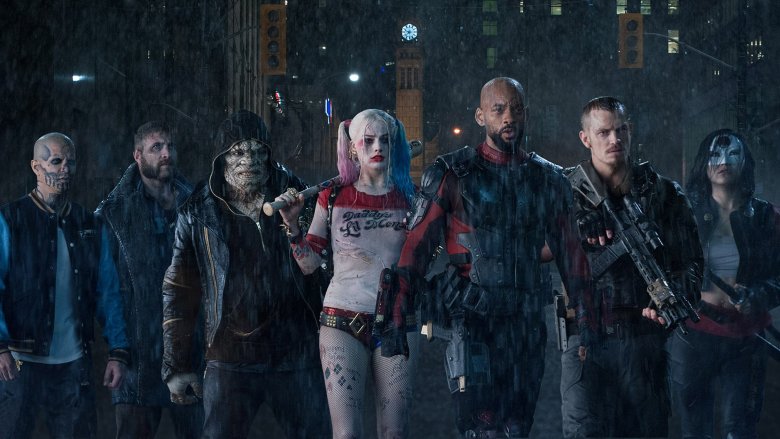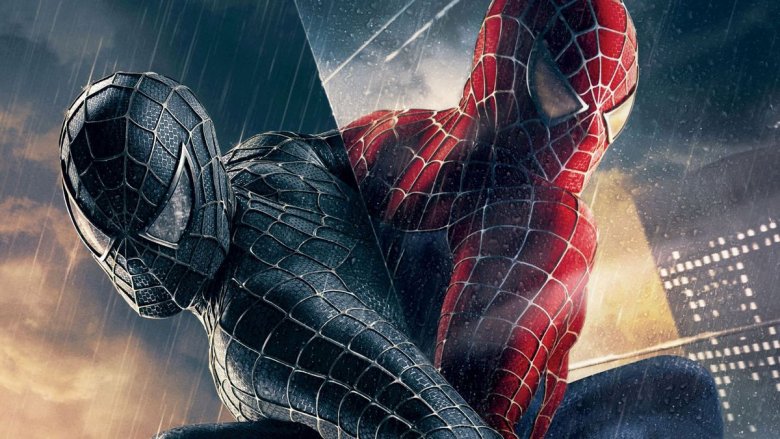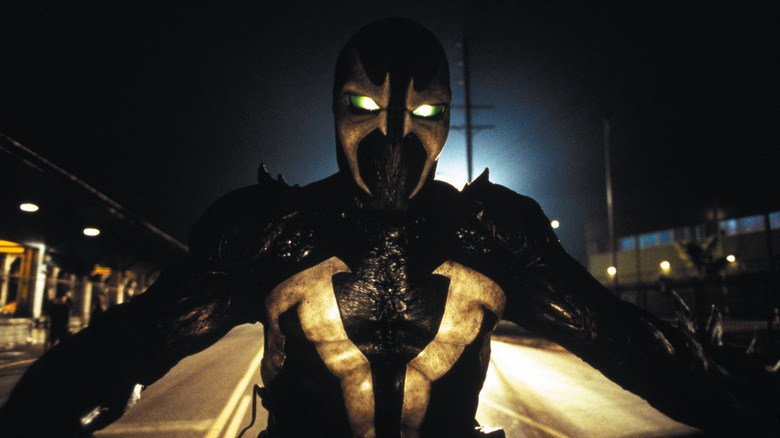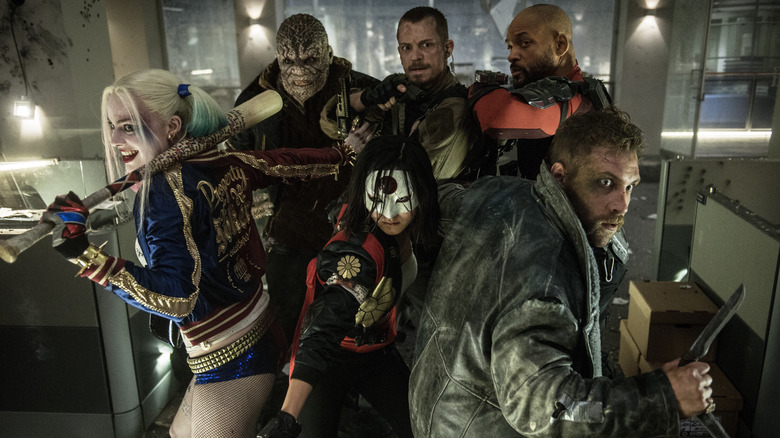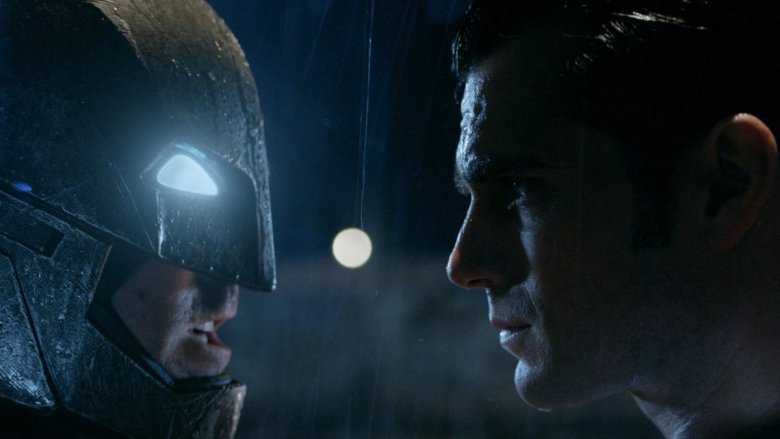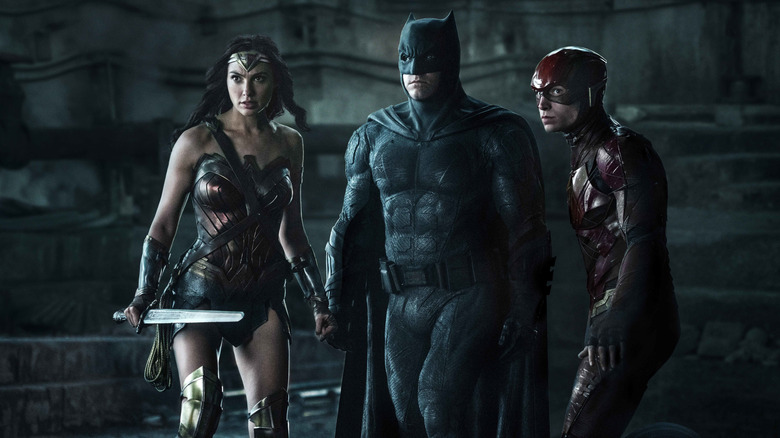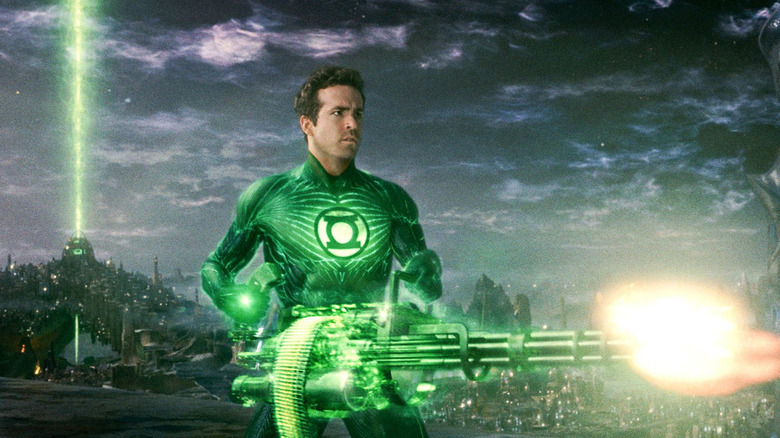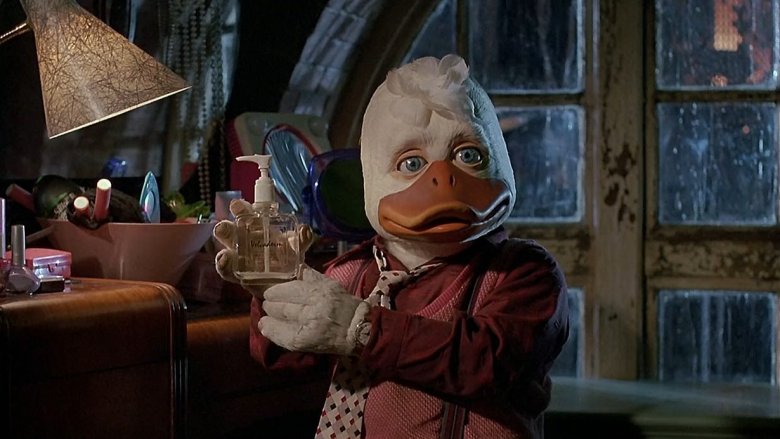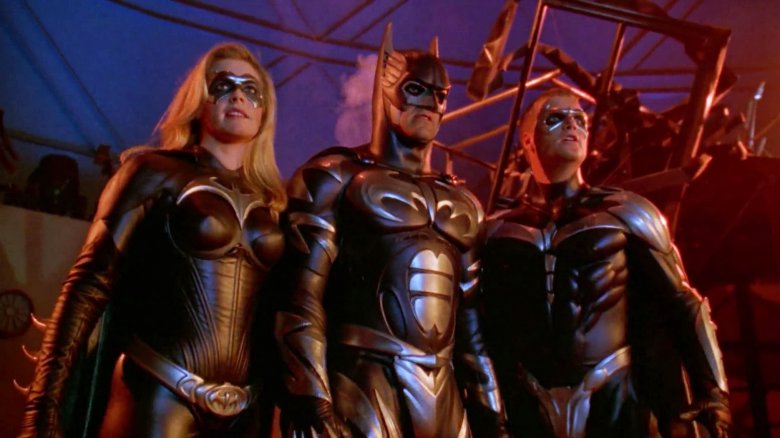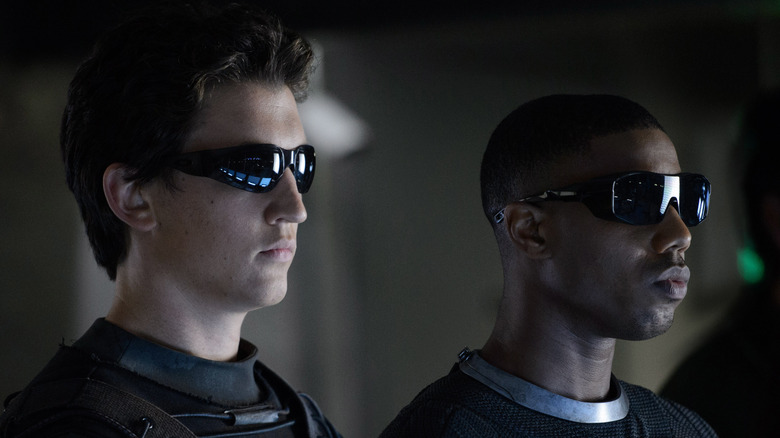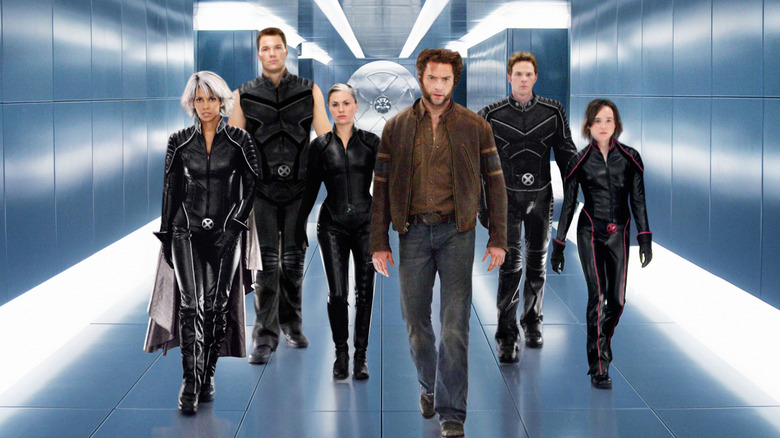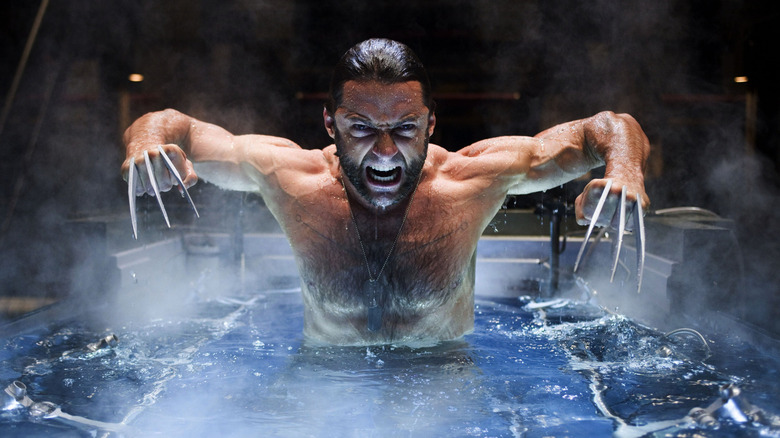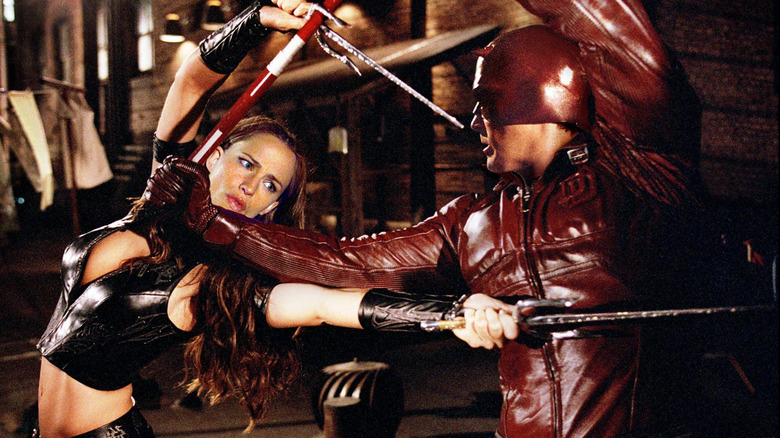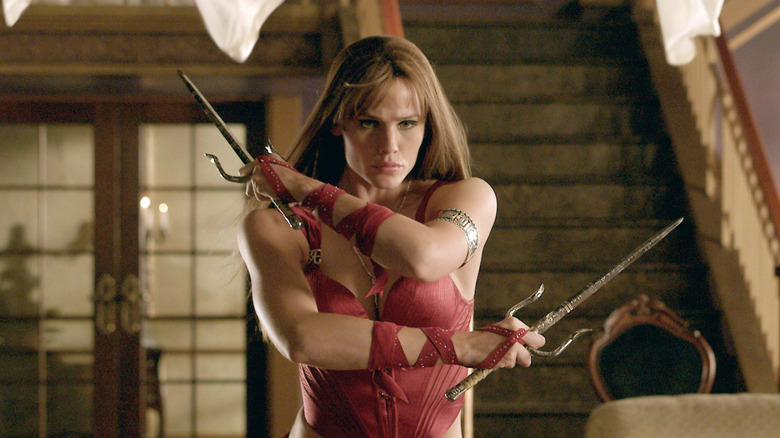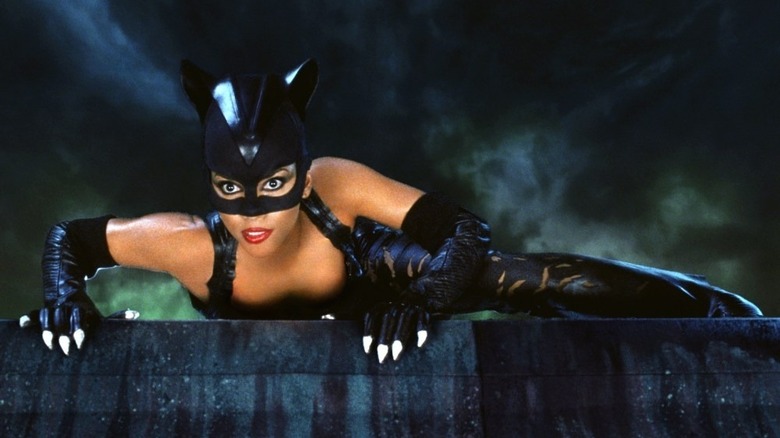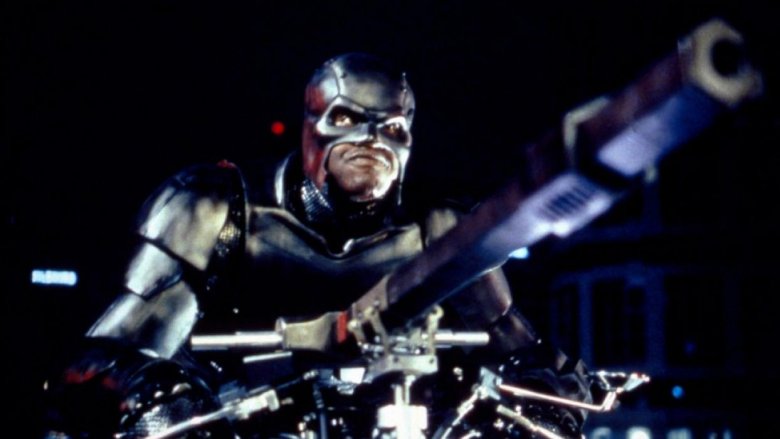Overhyped Superhero Movies That Ended Up Being Terrible
We live in divisive times, but we can all agree on one thing: superhero movies? Pretty dope. Through magic or science or (probably) the combined efforts of hundreds of dedicated, talented people, films about comic book characters have become consistently entertaining, frequently awe-inspiring spectacles of storytelling and CGI light thingies coming out of people's hands. Because of this, the last decade has seen an enormous shift in Hollywood's power dynamic, often revolving around the question of who owns the rights to which costumed vigilantes.
With movies like Avengers: Endgame and Captain Marvel breaking records at the box office and receiving critical acclaim, it can be easy to forget that there was a time when superhero flicks were a dangerously uncertain bet for studios. A time as far back as, like, 2017. As great as the onscreen tales of America's mythology have become, a lot of the time, they let us down hard. Here's a look at some of the worst offenders.
Spider-Man 3
Spider-Man 3: the sequel that launched a thousand dancing Peter memes. The film that exposed Peter Parker's dark side, a persona so vile and degenerate as to border on just being kind of a jazz club dweeb. A movie that looked at its predecessors' careful explorations of their villains' psyches and bravely asked, "What if we didn't do that this time?"
In today's climate, it can seem like a superhero movie doesn't really "count" unless there's a crossover cameo and the looming promise of a hundred sequels. It can be easy to forget that the relatively self-contained Sam Raimi Spider-Man films were some of the most popular movies of their time. Along with X-Men, 2002's Spider-Man is credited with starting the modern comic book movie boom. The first two installments grossed over $1.5 billion and received rave reviews. When the time came for the inevitable followup, expectations were high, and so was the budget, which rocketed to an estimated $258 million.
What resulted was the highest-grossing movie of the year, but a bummer for the fans. Director Sam Raimi even called the threequel "awful," and admitted that he shouldn't have tried to top himself as hard as he did.
Spawn
It's damned near inexplicable looking back, but there was a time when studios seemed convinced that semi-obscure independent comic book characters were a better draw than the ones everybody recognized. While filmmakers like Tim Burton and Kevin Smith failed to get a new Superman movie off the ground, pictures like Judge Dredd, The Mask, and The Phantom came out with astonishing regularity.
Without a doubt, Spawn was the team to beat in 1997. It featured an iconic '90s anti-hero and all the grisly action you could shake a hellfire-engulfed chain at. Plus, what else was coming out that year? A movie about a boat sinking? Nah, Spawn was going to dominate.
And dominate it didn't. The movie was ill-received. Its pioneering use of CGI looked corny, its writing was abysmal, and all of the scenes featuring the Violator stank of the director clapping and guffawing while he let John Leguizamo do whatever he wanted. There's also a shockingly enormous amount of fart humor for an R-rated trip to the theater. A planned sequel was put on the back burner, then left there.
Still, superheroes never really die, especially not the ones who are already dead. A Jamie Foxx-led reboot is currently in the works.
Suicid* Squad
Nobody here is going to accuse DC of totally aping Marvel when they made Suicid* Squad. All we're saying is that in 2014, Marvel released Guardians of the Galaxy, a colorful story with a classic rock soundtrack about a zany ensemble of morally ambiguous B-listers, and then two years later, Captain Boomerang and Killer Croc were chewing scenery backed by "Bohemian Rhapsody" and... you know what? They aped it. We are saying that.
And it wouldn't have been so bad if everything had gone more smoothly. DC was coming off of a decade of bleak movies, and a little levity might've been the shot in the arm that their cinematic universe needed. Unfortunately for the fans, what made it to the screen was sort of a sticky mess. The characters don't come together. If a picture is worth a thousand words, the script to SS is what would happen if you wrote out an amateur Garbage Pail Kids knockoff. The climactic bad guy looked like microwaved Gak. Jared Leto's much-publicized new Joker stuck around for all of about eight minutes before disappearing, maybe forever, to go be Morbius the Living Vampire for Sony/Marvel.
In the end, the greatest contribution the movie made to the public consciousness was giving young people a valuable lesson in the importance of not wearing short shorts in October, thanks to Spirit Halloween's line of Harley Quinn costumes.
Batman v Superman: Dawn of Justice
Remember that show Deadliest Warrior? They'd take two iconic fighters from history and pit them against each other in a rhetorical battle royale. If it was playing at the right bar, you could almost always find a guy in the corner who took the show way too seriously, graphically describing how the fight should've gone and generally skeeving out everybody else in the room. Basically, if that guy got to make his own superhero movie, it would've been Batman v Superman: Dawn of Justice.
Drawing visual inspiration from Frank Miller's The Dark Knight Returns and dramatic inspiration, seemingly, from an internet fan fiction that a troubled 14-year-old wrote after reading Frank Miller's The Dark Knight Returns, Batman v Superman: Dawn of People Remembering That You Can Just Write "v" Instead of "Versus" and Really Streamline Your Day was the better part of a century in the making. It was the first big screen, big budget attempt to bring two of American fiction's most iconic characters together.
Thanks to a script that felt like whatever comes before the first draft and a tone that was less Nolan-esque and more of a two-and-a-half-hour video game cutscene, what should've been a portrayal of light versus dark and hope versus cynicism landed more like the story of what happens when your childhood heroes try bath salts and get real mad.
Justice League
So... then they made a sequel.
Justice League: Late Morning of Justice was supposed to be DC's answer to Marvel's Avengers series. At last, the only powerhouse comic book publisher with the wherewithal to stand up to Stan Lee's towering nonagenarian frame was going to take their place on the Fields of Box Office Glory. Batman. Wonder Woman. The Flash. Even a sexed-up Aquaman that looked like a Jurassic Park scientist infused Jack Sparrow with Tom Hardy DNA. Darn it all, they couldn't miss... unless something went horribly wrong.
A couple of horribly wrong things later, we got Justice League. The production was plagued by high-profile problems. Director Zack Snyder left the movie after the death of his daughter, and Avengers frontman Joss Whedon was brought on to finish the project. Extensive reshoots and the world's most famous invisible mustache begat one of the most expensive movies ever made; a highly-stylized trolley car accident of a film that, against all odds, managed to make over $650 million worldwide and still lose money.
Green Lantern
Sit now, children, and listen to the elders as they tell you of a time before anyone was really sure that Ryan Reynolds could be in a superhero movie that didn't suck like a car wash vacuum hose.
It was the summer of 2011. Marvel was rounding the corner on The Avengers and DC had dollar signs in their eyes. With Christopher Nolan at the tail end of his Batman series, it was time to start building an onscreen Justice League. And what better place to start than with the most visually complicated and thematically ridiculous characters on their roster, the Green Lantern Corps?
Ryan Reynolds gave a charming performance as Hal Jordan. Everything else was what would happen if someone made a bomb out of CGI and dropped it on a unitard factory. The script introduces us to a cocky showoff fighter pilot and then expects us to accept that he doesn't want brightly colored showboat superpowers. The bad guy looks like evil jam.
Luckily, five years later, Reynolds' pool wound up dead and he leveraged that into some success.
Howard the Duck
Decades before Marvel Studios and Lucasfilm moved into Disney's basement, they briefly roomed together when George Lucas had the visionary plan to produce the first-ever theatrically-released Marvel movie. Which character did the mind behind Star Wars choose for this endeavor? It's difficult to spell out the sound of a heavy, exhausted sigh followed by the sound of cheap whiskey being swallowed, but if we could we'd put that here.
Look, it can be easy to forget that Howard the Duck was a pretty outstanding character. His Marvel stories have always been subversive and weird and over the top and a lot of the time, super gross. Since his first cameo in a Conan-adjacent swords-and-sorcery story in 1973, he's been pointing out how little sense the comic book world makes, and doing it from the body of a cartoon water fowl.
Anyway, the movie came along and stunted any hopes of an MCU by making Marvel's premiere big screen character sort of a horned-up, feathery E.T. It's this blend of kid humor and duck condoms and more kid humor and duck boobs and more kid humor. Anthropologists in the year 3000 will ruin their marriages with all of the late nights at the lab spent trying to figure out who this movie was for.
Batman and Robin
First, there was Batman, Tim Burton's dark, stylized reintroduction to the Dark Knight. The world fell in love. Then, there was Batman Returns, Tim Burton's ever darker, even more stylized follow up. The world said, "Maybe Danny DeVito vomiting inky blood is a little much. You know, we brought our kids to this. Let's let someone else drive."
Next, there was Batman Forever, Joel Schumacher's significantly less dark but somehow more stylized attempt to get the series back on a more family friendly track, and the world said, "Okay, but now it seems like we're overcorrecting? Just a little?" And finally, there was Batman and Robin, Joel Schumacher's visual representation of what happens when a garage sale Rubbermaid container full of action figures all try molly at the same time.
It had glow sticks. It had Arnold Schwarzenegger. It had the inexplicable addition of automatic ice skates to the Dynamic Duo's everyday going-out boots. Perhaps most baffling of all, it had Coolio, and somehow he was the only person in the movie to not make a cold-related pun.
Fant4stic
Spider-Man is Amazing more often than not, the Hulk finally got around to being Incredible, but damned if it isn't a chore to make a movie about the Four come out Fantastic. After director Tim Story took a couple of cracks at fun, family adventures utilizing Marvel's First Family, Fox saw fit to hand the franchise to indie darling Josh Trank.
What happened next is hard to say. Trank says that he put together a cut of the movie that he was proud of and that the studio took the project from him. The studio said that Trank threw a bevy of temper tantrums, fought with the actors, and mismanaged the entire production. Stan Lee probably said "Excelsior," but that would've been unrelated. It's just a thing he said a lot.
As movies go, Fant4stic (pronounced the way it's spelled, we assume) is a difficult one to defend. The characters are bland and the Thing doesn't wear pants, answering one decades-old question about his anatomy, but raising so many new ones. Victor Domashev Von Doom, meanwhile, looks like a crash test dummy made out of moonstone.
X-Men: The Last Stand
After the first two X-Men movies blockbusted superhero movies into the public eye and showed the world that comic book characters could have depth and significance, it was a scoche jarring when X-Men: The Last Stand was the follow up. All of the subtle undertones were gone, replaced by dialogue that might as well have been spoken straight into the camera and tagged with the line "Do you get it? We're a metaphor!" every time.
Beloved characters like Angel and Colossus, played up in the trailers, were relegated to glorified cameo parts to make up for the paragraphs-long list of featured players. Others, like Psylocke and Kid Omega, were more or less just names that got stuck on weird-looking mutants to give them brand recognition. Cyclops died off screen, Professor X died all over the screen, and Magneto went full mustache-twirling cartoon bad guy.
Luckily, a tepid fan response really bent the ears of the executives at 20th Century Fox, and they never made another noisy, pointless X-Men movie again... right?
X-Men Origins: Wolverine
Just shy of three years later, 20th Century Fox released another noisy, pointless X-Men movie.
X-Men Origins: Wolverine, a.k.a. Stab Man Begins, was the ever ill-advised answer to the question, "Hey, you know that character whose entire appeal is his mysterious past and his quest for meaning through self-actualization rather than dwelling on what used to be? What's his deal, anyway?" The film starred Hugh Jackman, Liev Schreiber, and Hugh Jackman's shirtless torso.
This is the internet, and there's not much that can be said about X-Men Origins: Knife Hands that hasn't been said already. The decades-long wait for a big screen Gambit is now just another drop in the ocean of things Hollywood wishes they hadn't involved Taylor Kitsch in around that time. There's that scene where Wolverine checks out his claws in the bathroom and he looks like he has six Singing Swords from Who Framed Roger Rabbit coming out of his mitts. And there's the movie's take on Deadpool, which is... not really something we talk about anymore.
Daredevil
It was 2003, and audiences were ready for a dark take on comic book stories. Fox provided, offering up Daredevil, the tale of a guilt-ridden disabled Catholic who dresses like the devil and throws bad guys in front of trains. What could possibly go wrong?
Written and directed by Mark Steven Johnson, the mind behind both Grumpy Old Men films (Oh...) and Michael Keaton's Jack Frost (Ooooh...) Daredevil mashed together elements of a ton of popular storylines from the comics and added just a hint of overwhelming amounts of Evanescence. Ben "Not a Boy, Not Yet a Batman" Affleck played Matt Murdock, vigilante by night and guy who won't take a woman trying to punch him as a hint that she wants him to leave her alone by day. They never address it in the script, but it's a good thing for Matt that he's an attorney.
Despite having a couple of decent moments (the scene where Matt interrogates a guy by "blindly" driving his car is golden) and a director's cut that, taking a wide view, doesn't suck, Daredevil winds up being an impossible-to-describe smoothie of over-stylization and blandness. That said, more than 15 years later, it remains one of the few superhero films to prominently feature music by Nickelback. So... that's something.
Elektra
"Okay," thought Fox, "Daredevil didn't quite work. Let's not throw the baby out with the bathwater. That Jennifer Garner sure did an adequate job of flipping around and looking sad. Let's give her her own picture. Only this time, we'll do it right! We'll hire the director of Reign of Fire and everything will turn out great! Right? Right, guys?"
The oft-forgotten second and final entry in Fox's Daredevil-verse reeked heavily of a development meeting where one of the executives said "there are no bad ideas" and genuinely meant it. There's ninjas and magic tattoos and Terence Stamp and honestly, probably not a lot of people who made it all the way to the end. Garner shot the whole thing while she was on a break from Alias, and sources close to her say that she only did it because she was contractually obligated and thought the movie was trash.
Catwoman
It's a rare movie that's so universally hated that the lead performer shows up to the Golden Raspberry awards to acknowledge their wrongdoings. And Catwoman is nothing if not a rare movie.
See, right before Christopher and Jonathan Nolan convinced studios that maybe the secret to a good superhero movie was — and this is shocking — attaching good filmmakers, Warner Bros. released Catwoman. It's the story of a character whose sensuality is curtailed somewhat by the realization that she probably smells like ammonia all the time. Halle Berry plays Patience Phillips, who is definitely not Michelle Pfeiffer from Batman Returns but follows the thematic beats of her genesis story unusually closely. Uptight working class woman? Check. Discovers corporate corruption and is murdered as a result? Check. Brought back to life when cats rub against her, presumably through the life giving powers of static electricity? You'd better believe that's a check.
And it's bad. It's so bad. Catwoman uses her newfound cat powers to shut down her neighbors' noisy party, making her come off as less Catwoman and more cat lady. It doesn't get better after that. For a candid description of the film's quality, please see Halle Berry's acceptance speech at the 2005 Razzies, which included the kind of grown-up words we can't use here.
Steel
The truth may be lost, but it still exists, whispering to us from boxed-up VHS collections and the backs of abandoned video rental stores: Shaquille O'Neal had an acting career, and he absolutely made a superhero movie.
It was 1997, and crowds had come down with a severe case of Shaq fever after his jaw-dropping turn as the titular rapping boombox genie in the hit movie Kazaam. The thing is, Space Jam had just broken box office records and nobody was sure why, so maybe studios thought that wooden, dead-eyed performances from professional athletes were the lightning in a bottle they needed. Who's to say, really? The point is, we got Steel out of the chaos, and the world is grateful for it.
Here's the really weird thing: on paper, the plot bears striking similarities to Iron Man. It's about a weapons designer who, after a fateful accident involving his own creations, builds a metal suit of power armor and takes down the man he used to work with who, twist, was selling their creations to the bad guys all along. It's difficult to say what factors made the two movies so contrasting in quality, besides a hundred million dollars, a decade of progress in the development of CGI, and casting actual actors.
